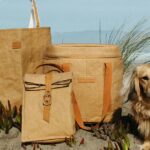How To Calculate Your Amazon Ads Budget by TACoS Targeting
There are multiple approaches to planning your Amazon PPC ad budget, depending on your business goals. For instance:
- Calculating your required Amazon advertising budget to hit a particular numerical sales target
- Calculating your required Amazon advertising budget to hit a target for year over year (YoY) growth
- Calculating your required Amazon advertising budget to maximize growth while staying within your required profitability
When we perform these calculations for our clients, we start with a set of assumptions like ROAS (Return on Ad Spend), advertising conversion rate, and baseline organic sales (how much will be sold if no ads are run), and determine the target cost per click (CPC), which is based on the expected CPC range, and how aggressive we want to be in how often ads are shown.
For that third calculation, to understand the optimal Amazon advertising budget to drive maximum growth while maintaining your required margin, we use a method called TACoS targeting.
Why TACoS-Based Budgeting Is Important
A typical growth path for new Amazon brands is to start by maximizing ad sales, at the expense of profitability. But after a certain point, ad investment needs to be sustainable. Usually the best way to approach this is to set a target TACoS, or total advertising cost of sales.
- A Beginner’s Guide to Brand Hierarchy ModelsBrand hierarchy models are frameworks used by companies to organize and manage their portfolio of brands. Here are some key components and types of brand hierarchy models.
Let’s say that once you’ve plugged in all the costs associated with selling your products and determined your required profitability. What’s left over is the percentage of revenue that you should invest in Amazon PPC advertising to maximize growth.
Let’s say that your product sells on Amazon for $100 and you sell 200 products a month. Product costs and Amazon selling fees take up $60, and you want to make $15 profit per sale. That leaves $25 per sale that you can invest into Amazon advertising, which means that your target TACoS is 25% to drive as much growth as possible out of your Amazon ads.
Based on past experience, you can expect a ROAS of $2.40. So, what should your advertising budget be to hit that target of a 25% TACoS, and how will that affect your gross sales?
That’s simple to understand… but not so simple to calculate.
Here Comes The Math!
Let’s say that you already have a good estimate of your baseline organic sales next quarter, and the ROAS you can expect from advertising based on past performance.
To calculate the required advertising spend based on your target Total Advertising Cost of Sales (TACoS), given your organic sales and Return on Ad Spend (ROAS), you can use the following formula.
First, understand the key components:
Organic Sales (OS): Sales generated without advertising.
Return on Ad Spend (ROAS): Revenue generated from advertising divided by advertising spend.
Target TACoS: The target ratio of advertising spend to total sales (both organic and ad-driven).
The formula for Total Sales (TS) is:
TS = OS + (Ad Spend x ROAS)
The formula for TACoS is:
TACoS = Ad Spend / TS
To calculate the required Ad Spend (AS) with the target TACoS as the input, you rearrange the TACoS formula:
AS = TACoS x TS
AS = TACoS x (OS + (AS x ROAS))
With us so far? It’s okay if you’re not. But here it is, all put together:
Ad Spend = (TACoS x OS) / (1 – (TACoS x ROAS))
Using the scenario above:
- OS = $20,000 per month
- ROAS = $2.40
- Target TACoS = 25%
Gets us:
- Ad Spend = (25% * $20,000) / (1 – (25% x $2.40))
- Ad Spend = $5,000 / (1 – 0.6)
- Ad Spend = $5000 / 0.4
- Ad Spend = $12,500
So, investing $12,500 per month in sales at a $2.40 ROAS will generate an additional $30,000 in ad sales, for total sales of $50,000. $12,500 is 25% of $50,000.
Although doing old-fashioned math can be fun, we use a Google Sheet to calculate this for our clients (the ROAS estimate and prior year’s sales are entered elsewhere, and this particular calculation assumes a $2.00 ROAS):

Two Things to Keep in Mind
Calculations like these assume certain constants, like average CPC and ROAS, but in the real world, they’re not constant, and ad performance often isn’t linear with ad spend.
In the world of Amazon PPC advertising, there’s only so much ad traffic available for dependable, high performing keywords, so when you’re calculating performance based on ad spend, be aware that larger ad spends can mean leaving the safe world of predictable keyword performance and venturing into broader targeting and higher investments in ad units like Sponsored Brands and Sponsored Display that will likely have different performance.
And, your advertising spend can affect your organic sales in various ways. Investing heavily in defensive spending by bidding on your own branded keywords can generate sales that you might have gotten organically anyway. Aggressive advertising can also drive sales that are more difficult to attribute, like repeat purchases and word of mouth.
Because of this, estimates like these work best when you’re making smaller adjustments to your spend. If you’re thinking of (for instance) quadrupling your ad spend, performance forecasting can be less accurate.
About Us
Parker-Lambert is a full service branding and eCommerce agency with a focus on Amazon. We’re an Amazon Ads verified partner and we help clients ranging from startups and emerging brands on Seller Central, to 1P Vendor Central multinational brands. Want to see if we might be a good fit for your needs? Let’s talk.
More From Parker-Lambert:
- Transforming Out of the Woods Amazon Performance: A Case Study in Strategic Amazon MarketingWhile Out of the Woods products have made a mark in major retailers and through their direct-to-consumer site, they sensed untapped potential to grow their sales on Amazon, and this is where Parker-Lambert’s expertise comes into play.
- Before and After: Dr. Perry’s Product PhotographyDr. Perry’s, the natural skin care line created by celebrated plastic surgeon Arthur W. Perry, MD, recently underwent some packaging updates. This was a great opportunity to reshoot their entire line and bring their product photography up to current standards.
- Audrey’s Chia Cookies Product Photography: Before and AfterWe’re helping Audrey’s Chia Cookies improve their Amazon brand presence. The first step has been to create a new set of product photography.
- Rethinking Amazon Merchandising for Cybele’s Free to EatOn Amazon, a professional, consistent and on-brand presence is essential. Here’s how we made this cookie brand’s product pages clear and added appeal.
- New Brand Roundup: VitaFive, Svetia and MonkiäThings have been busy here at Parker-Lambert. We’ve added three brands to our eCommerce management roster: VitaFive, Svetia, and Monkiä.
Schedule Your Intro Strategy Call
Let’s get started with a short Zoom session to discuss your needs and answer any questions. We won’t add you to any lists or bombard you with emails after the session. It’s free, with no obligation.
Already know what you need, and just want to see pricing? You can request a quote.






